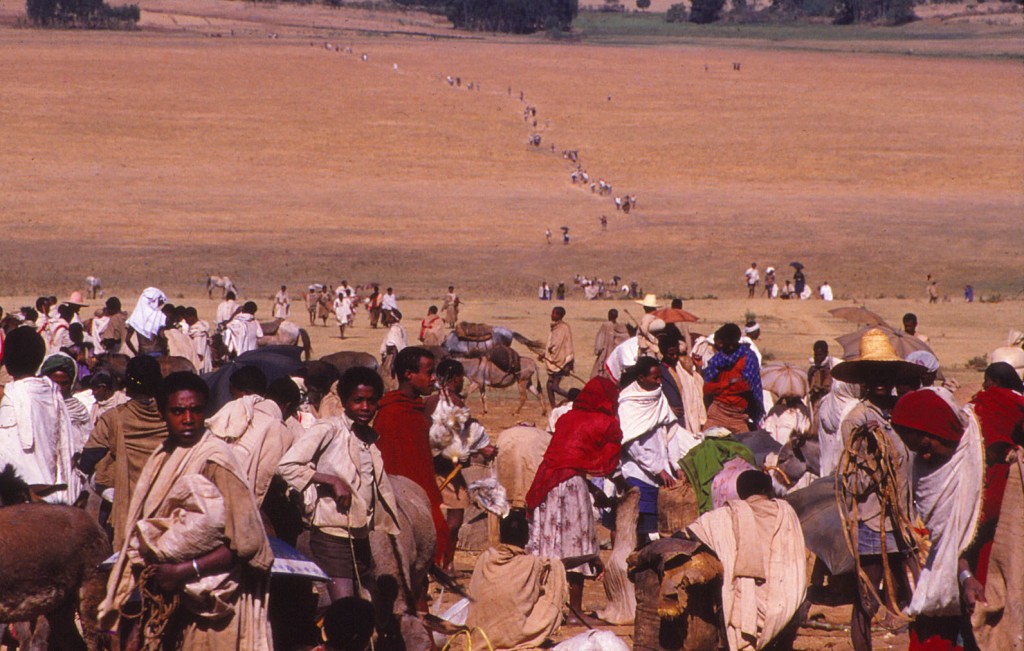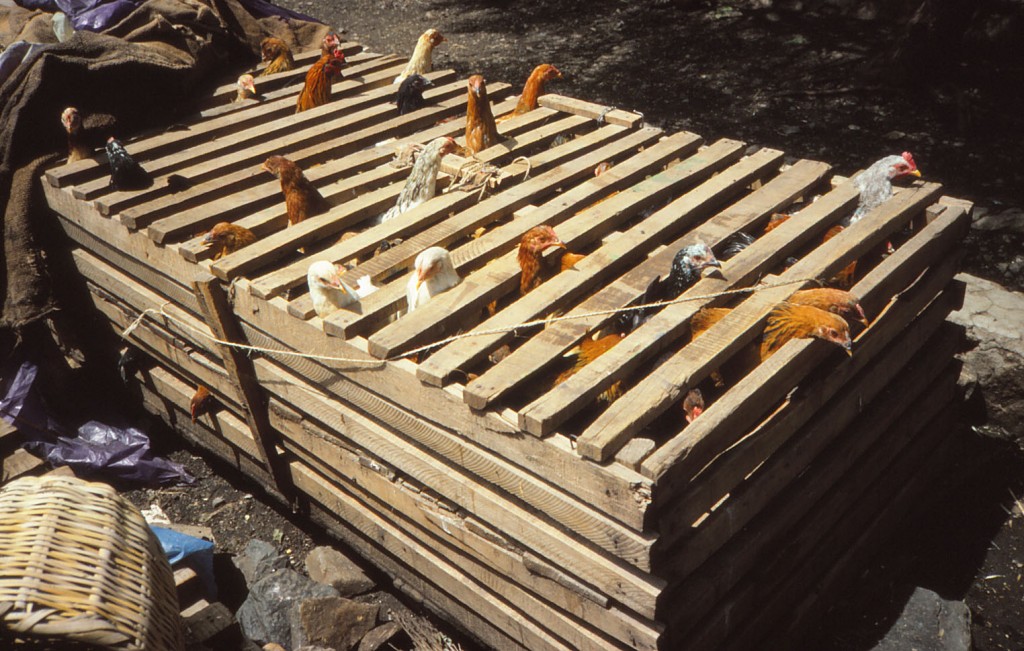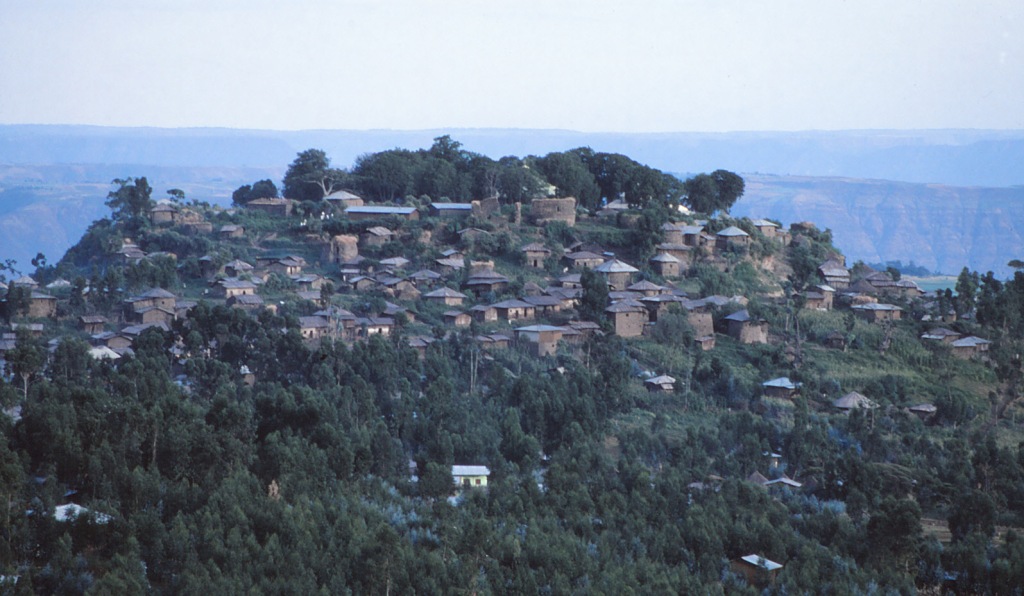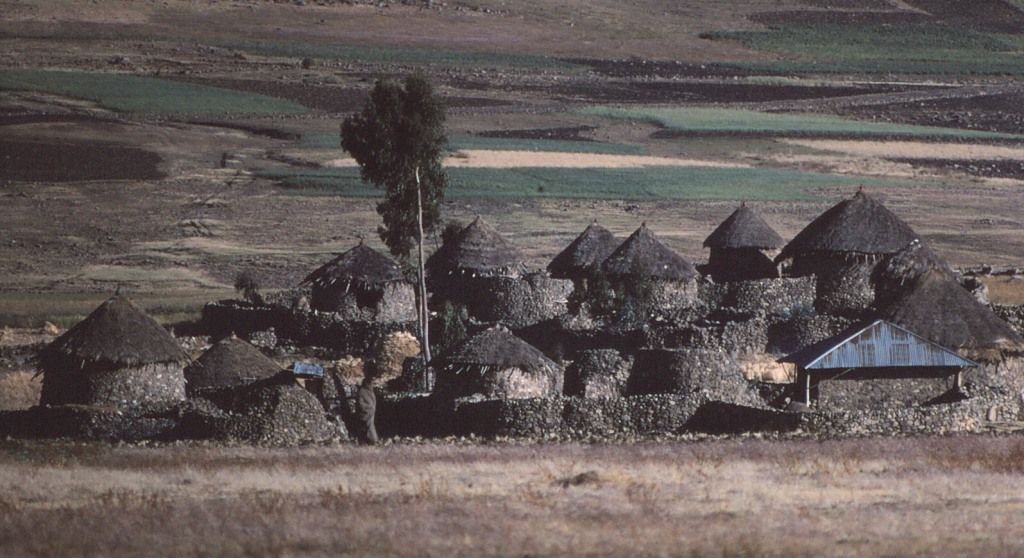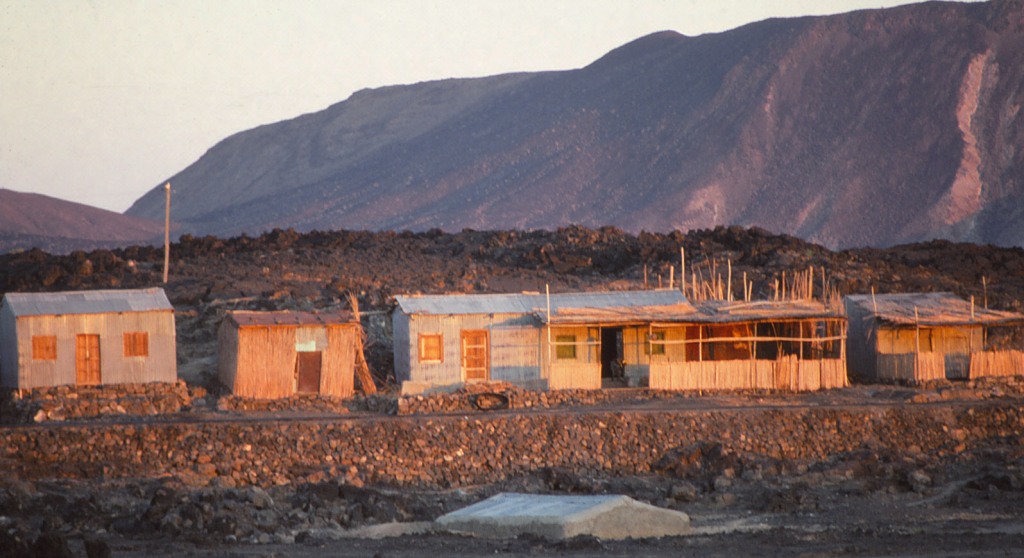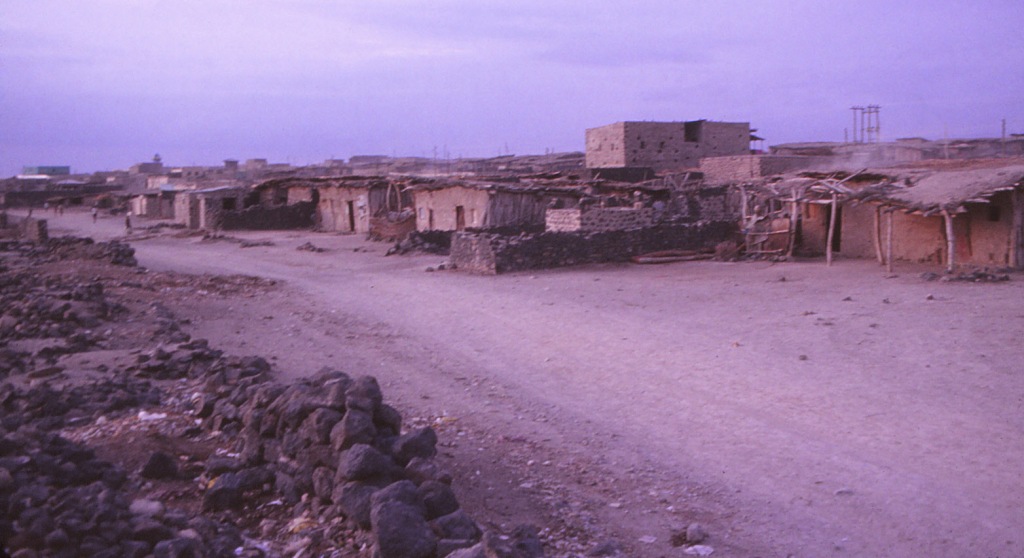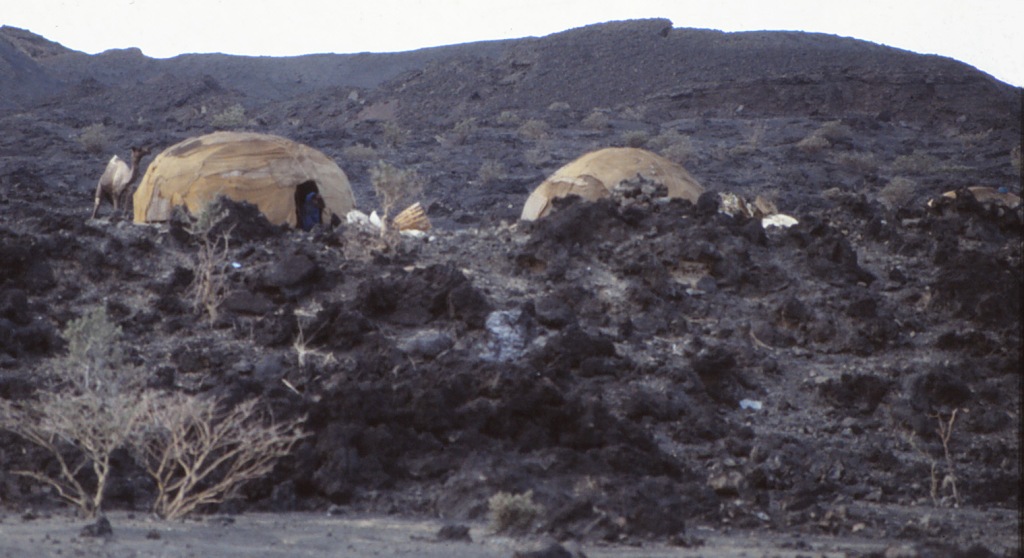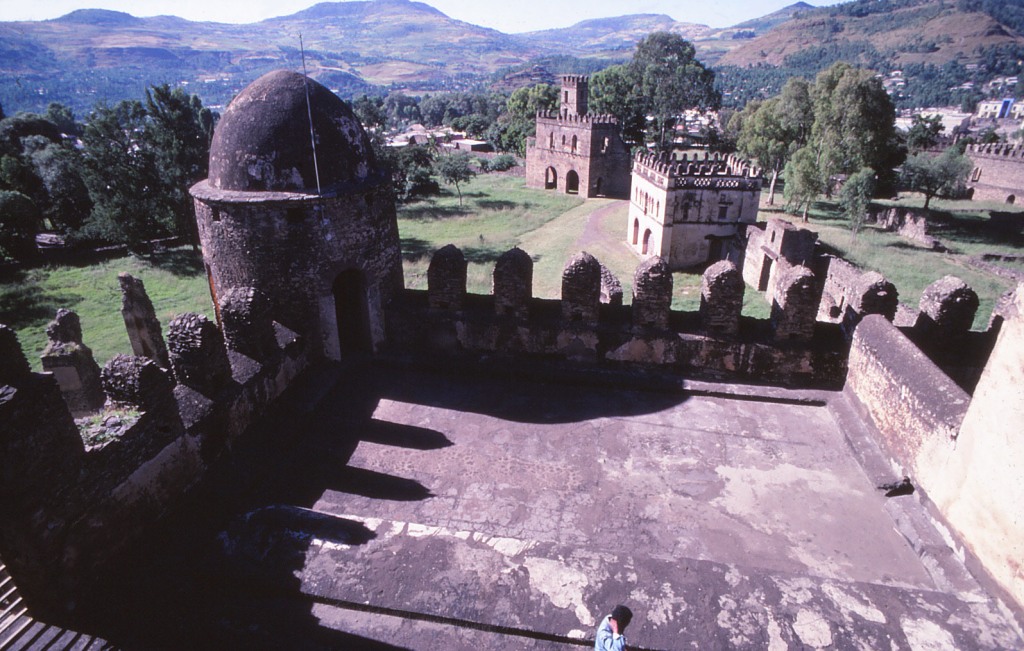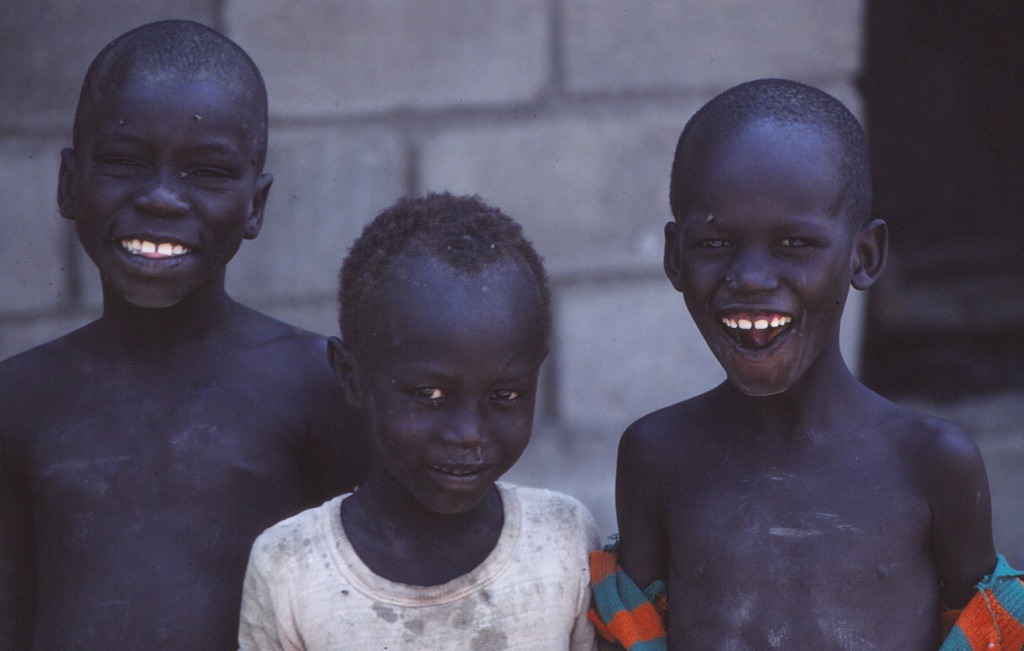Markets and Buildings
These pictures show markets and buildings in Ethiopia. The locations given are those used in the 1980s. There is a map of the regions at the end.
People often walk long distances to markets. They provide a chance for people to meet, which is at least as important as the chance to
buy and sell. In many regions settlements are small and scattered around the countryside, so going to market is a welcomed social event.
Whenever you see lines of people like this, it must be a market day. Northern Shewa region.
People coming to a market near Jinka, Gamo Gofa region
Baskets going to the market, Sidamo region
On the way to the market, somewhere in Shewa region
Green coffee is sold in small measures at the markets. Harerge region.
Animals, like chickens, are also common.
A clay container of butter decorated with a eucalyptus branch, market in Dese, Welo region.
A man, to the right, walking a sheep home from the market. Welo region.
The market in Harer, Harerge region.
A man counting money at the market in Dese, Welo region
People leaving the market, Shewa region.
Donkeys are commonly used for transport, here leaving a market.
Hotel in the south-east part of Ethiopia, either Bale or Sidamo region.
There is a great variation of traditional housing. Many are built with chicka, mud plastered walls. The frame is made of wooden
poles with filling between the poles. This house, in Dese, Welo region, has a chicka top floor. The ground floor has stone walls.
Traditional chicka building with leaning walls. The structural members are made of wood, and these
walls have probably been damaged by termite infestation. Termites are very common in Ethiopia.
Traditional houses do not use wood planks. This picture show how planks are cut, which may explain why. Shewa region.
Buildings made of stone are common in the central and northern part of Ethiopia, like
Gondar, Tigray and Welo regions. This village is in Welo region, not far from Lalibela.
Shewa region.
Welo region
Welo region
Shewa region
Houses built in the southern part of Ethiopia look more like these, in Gamo Gofa region.
Morning picture of a village in Ilubabor region. The smoke is from people making breakfast.
Under construction. The walls will be covered with chicka.
There is actually quite a volume of wood in chicka walls.
Grass or reed is a common roofing material. Ilubabor region.
Traditional Sidamo housing
Sidamo region
Traditional housing of the Dorze people in Sidamo.
Traditional Danasech housing, Omo valley
Housing along the road to Aseb, Welo region. The houses are made with corrugated iron.
This building was made from beaten out asphalt drums left over when the road was built to Aseb.
Asayta, Welo region. Houses in the desert are often built with flat roofs with mud on top, to help keep the buildings cool.
Traditional Afar buildings, Welo region.
Ethiopia has some very old buildings. Probably the most famous are the monolithic stone churches in Lalibela, Welo region.
Church of St George, Lalibela. The man worked as a driver for the Ministry of Education.
The eight churches were hewn out of the rock. They are sometimes “free standing”, sometimes incorporated in the side of the rocks.
A famous building in Gondar is Fasilides castle from the 17th century.
View from the upper floor of the castle.
Debre Birhan Selassie church is also from the 17th century. This is the ceiling inside the church, often seen on postcards.
Not only the old buildings used human power for the construction. The picture is from construction of a water reservoir outside Mekele, Tigray region.
Ethiopia has suffered severe droughts. This picture shows handing out of emergency relief food in Welo region, picture taken in 1983.
Ethiopia has so many different people, here near Omo valley.
Children in Welo region.
Children in Gambella, Ilubabor region.
From the National Atlas of Ethiopia, January 1988.

